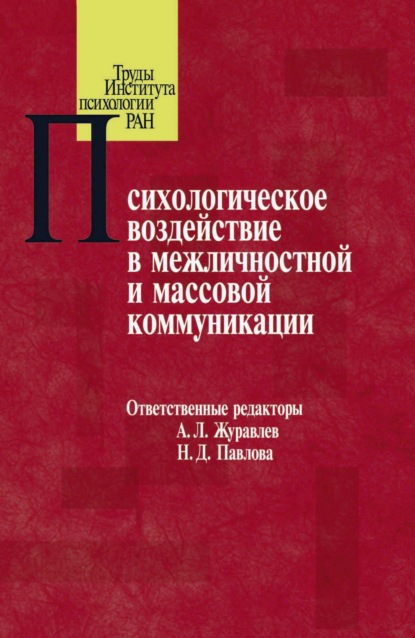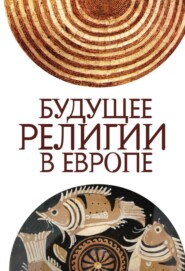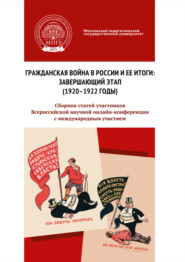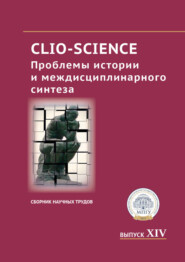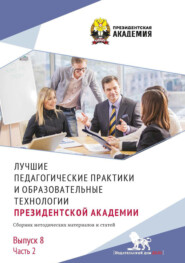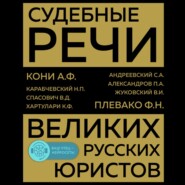По всем вопросам обращайтесь на: info@litportal.ru
(©) 2003-2024.
✖
Психологическое воздействие в межличностной и массовой коммуникации
Настройки чтения
Размер шрифта
Высота строк
Поля
Diefenbach D., West M. Television and attitudes toward mental health issues // Journal of Community Psychology. 2007. V. 35 (2). P. 181–195.
Dunn S. Candidate and media agenda setting in the 2005 Virginia gubernatorial election // Journal of Communication. 2009. V. 59 (3). P. 635–652.
Garrett R. K. Politically motivated reinforcement seeking: Reframing the selective exposure debate // Journal of Communication. 2009. V. 59 (4). P. 676–699.
Gerbner G., Gross L. Living with television: The violence profile // Journal of Communication. 1976. V. 26 (2). P. 173–179.
Gerbner G., Gross L., Eleey M. F., Jackson-Beeck M., Jeffries-Fox S., Signorielli N. TV violence profile № 8 // Journal of Communication. 1977. V. 27 (2). P. 171–180.
Gerbner G., Gross L., Morgan M., Signorielli N. Living with television: The dynamics of the cultivation process // Perspectives on media effects / Eds J. Bryant, D. Zillmann. Hillsdale, N. J.: Lawrence Erlbaum, 1986. P. 17–40.
Gerrig R. J. Experiencing narrative worlds: On the psychological activities of reading. New Haven, CT: Yale University Press, 1993.
Gonzalez H. Mass media and the spiral of silence: The Philippines from Marcos to Aquino // Journal of Communication. 1988. V. 38. № 4. P. 33–48.
Green M. C. Transportation into narrative worlds: The role of prior knowledge and perceived realism // Discourse Processes. 2004. V. 38. P. 247–266.
Green M. C., Brock T. C. The role of transportation in the persuasiveness of public narratives // Journal of Personality and Social Psychology. 2000. V. 79. P. 701–721.
Green M. C., Kass S., Carrey J., Feeney R., Herzig B., Sabini J. Transportation across media: Print versus film comparisons // Media Psychology. 2008. V. 11. P. 512–539.
Gunther A. C., Bolt D., Borzekowski D. L. G., Liebhart J. L., Dillard J. P. Presumed influence on peer norms: How mass media indirectly affect adolescent smoking // Journal of Communication. 2006. V. 56. P. 52–68.
Hawkins R., Pingree S. Using television to construct social reality // Journal of Broadcasting. 1981. V. 25 (4). P. 347–364.
Huesmann L. R., Moise-Titus J., Padolski C., Eron L. Longitudinal relations between children’s exposure to TV violence and violent behavior in young adulthood // Developmental Psychology. 2003. V. 39 (2). P. 201–222.
Iyengar S., Hahn K. S. Red Media, Blue Media: Evidence of Ideological Selectivity in Media Use // Journal of Communication. 2009. V. 59. P. 19–39.
Jeffres L., Neuendorf K., Bracken C., Atkin D. Integrating theoretical traditions in media effects // Mass Communication and Society. 2008. V. 11 (4). P. 470–491.
Jorg M. Need for orientation as a predictor of agenda-setting effects // International Journal of Public Opinion Research. 2008. V. 20 (4). P. 440–453.
KatzE., Lazarsfeld P. Personal influence: The Part played by people in the flow of communication. N. Y.: Free Press, 1955.
Kiousis S. Shields A. Inter-candidate agenda setting in presidential elections // Public Relations Review. 2008 V. 34 (4). P. 325–330.
Klapper J. The effects of mass communication. Glencoe, Ill: Free Press, 1960.
Knobloch S., Zillmann D. Mood management via the digital jukebox // Journal of Communication. 2002. V. 52 (2). P. 351–366.
Littlejohn S. W. Theories of human communication. N. Y., 1989.
Mares M.L., Oliver M.B., Cantor J. Age differences in adults’ emotional motivations for exposure to films // Media Psychology. 2008. V. 11. P. 488–511.
Matabane P. W. Television and the black audience: Cultivating moderate perspectives on racial integration // Journal of Communication. 1988. V. 38. № 4. P. 21–31.
McCombs M. News influence on our pictures of the world // Media Effects / Eds J. Bryant, D. Zillmann. Hillsdale, N. J.: Lawrence Erlbaum, 1994.
Morgan M., Shanahan J. Two decades of cultivation research // Communication yearbook 20 / Ed. B. R. Burleson. Thousand Oaks, CA: Sage Publications, 1997. P. 1–47.
Nabi R. Cosmetic surgery makeover programs and intentions to undergo cosmetic enhancements // Communication Research. 2009. V. 35 (1). P. 1–27.
Nabi R., Riddle K. Personality traits, television viewing and the cultivation effect // Journal of Broadcasting and Electronic Media. 2008. V. 52 (3). P. 327–348.
Neuwirth K., Frederick E., Mayo C. Spiral of silence and fear of isolation // Journal of Communication. 2007. V. 57 (3). P. 450–468.
Niedenthal P. M. Implicit Perception of Affective Information // Journal of Experimental Social Psychology. 1990. V. 26. P. 505–527.
Noelle-Neumann E. The spiral of silence: Public opinion – Our social skin. Chicago: Chicago University Press, 1984.
Oliver M. B. Tender affective states as predictors of entertainment preference // Journal of Communication. 2008. V. 58. P. 40–61.
Potter W. J. Examining cultivation from a psychological perspective // Communication Research. 1991. V. 18 (1). P. 77–102.
Potter W.J. Cultivation theory and research // Human Communication Research. 1993. V. 19 (4). P. 564–601.
Potter W. J., Chang I. C. Television exposure and the cultivation hypothesis // Journal of Broadcasting and Electronic Media. 1990. V. 34 (3). P. 313–333.
Prentice D.A., Gerrig R.J., Bailis D. S. What readers bring to the processing of fictional texts // Psychonomic Bulletin and Review. 1997. V. 4. P. 416–420.
Quick B. The effects of viewing Grey’s Anatomy on perceptions of doctors and patient satisfaction // Journal of Broadcasting and Electronic Media. 2009. V. 53 (1). P. 38–55.
Rogers E. M., Shoemaker F. F. Communication of Innovations: A cross-cultural approach. N. Y.: Free Press, 1971.
Rubin A. M., Windahl S. The uses and dependency model of mass communication // Critical Studies in Mass Communication. 1986. V. 3. P. 184–199.
Shehata A. Unemployment on the Agenda: A Panel Study of Agenda-Setting Effects During the 2006 Swedish National Election Campaign // Journal of Communication. 2010. V. 60 (1). P. 182–203.
Shaw D. L., McCombs M. E. The emergence of American political issues: The Agenda-Setting Function of the Press. St Paul, MN, 1977.
Shrum L. Processing strategy moderates the cultivation effect // Human Communication Research. 2001. V. 27 (1). P. 94–120.
Signorielli N., Morgan M. Cultivation analysis: New directions in media effects research. Newbury Park, CA: Sage Publications, 1990.
Tai Z. The structure of knowledge and dynamics of scholarly communication in agenda setting research, 1996–2005 // Journal of Communication. 2009. V. 59 (3). P. 481–513.
Tapper J. The ecology of cultivation // Communication Theory. 1995. V. 5 (1). P. 36–57.
Van Evra J. Television and child development. Hillsdale, N. J.: Lawrence Erlbaum, 1990.
Walgrave S., Van Aelst P. The Contingency of the Mass Media’s Political Agenda Setting Power. Towards A Preliminary Theory // Journal of Communication. 2006. V. 56. P. 88–109.
Wallstein K. Agenda setting and the blogosphere // Review of Policy Research. 2007. V. 24 (6). P. 567–587.
Wanta W., Hu Y. Time-lag differences in the agenda-setting process // International Journal of Public Opinion Research. 1994а. V. 6 (3). P. 225–240.
Wanta W., Hu Y. The effects of credibility reliance and exposure on media agenda setting // Journalism Quarterly. 1994b. V. 71 (1). P. 90–98.
Dunn S. Candidate and media agenda setting in the 2005 Virginia gubernatorial election // Journal of Communication. 2009. V. 59 (3). P. 635–652.
Garrett R. K. Politically motivated reinforcement seeking: Reframing the selective exposure debate // Journal of Communication. 2009. V. 59 (4). P. 676–699.
Gerbner G., Gross L. Living with television: The violence profile // Journal of Communication. 1976. V. 26 (2). P. 173–179.
Gerbner G., Gross L., Eleey M. F., Jackson-Beeck M., Jeffries-Fox S., Signorielli N. TV violence profile № 8 // Journal of Communication. 1977. V. 27 (2). P. 171–180.
Gerbner G., Gross L., Morgan M., Signorielli N. Living with television: The dynamics of the cultivation process // Perspectives on media effects / Eds J. Bryant, D. Zillmann. Hillsdale, N. J.: Lawrence Erlbaum, 1986. P. 17–40.
Gerrig R. J. Experiencing narrative worlds: On the psychological activities of reading. New Haven, CT: Yale University Press, 1993.
Gonzalez H. Mass media and the spiral of silence: The Philippines from Marcos to Aquino // Journal of Communication. 1988. V. 38. № 4. P. 33–48.
Green M. C. Transportation into narrative worlds: The role of prior knowledge and perceived realism // Discourse Processes. 2004. V. 38. P. 247–266.
Green M. C., Brock T. C. The role of transportation in the persuasiveness of public narratives // Journal of Personality and Social Psychology. 2000. V. 79. P. 701–721.
Green M. C., Kass S., Carrey J., Feeney R., Herzig B., Sabini J. Transportation across media: Print versus film comparisons // Media Psychology. 2008. V. 11. P. 512–539.
Gunther A. C., Bolt D., Borzekowski D. L. G., Liebhart J. L., Dillard J. P. Presumed influence on peer norms: How mass media indirectly affect adolescent smoking // Journal of Communication. 2006. V. 56. P. 52–68.
Hawkins R., Pingree S. Using television to construct social reality // Journal of Broadcasting. 1981. V. 25 (4). P. 347–364.
Huesmann L. R., Moise-Titus J., Padolski C., Eron L. Longitudinal relations between children’s exposure to TV violence and violent behavior in young adulthood // Developmental Psychology. 2003. V. 39 (2). P. 201–222.
Iyengar S., Hahn K. S. Red Media, Blue Media: Evidence of Ideological Selectivity in Media Use // Journal of Communication. 2009. V. 59. P. 19–39.
Jeffres L., Neuendorf K., Bracken C., Atkin D. Integrating theoretical traditions in media effects // Mass Communication and Society. 2008. V. 11 (4). P. 470–491.
Jorg M. Need for orientation as a predictor of agenda-setting effects // International Journal of Public Opinion Research. 2008. V. 20 (4). P. 440–453.
KatzE., Lazarsfeld P. Personal influence: The Part played by people in the flow of communication. N. Y.: Free Press, 1955.
Kiousis S. Shields A. Inter-candidate agenda setting in presidential elections // Public Relations Review. 2008 V. 34 (4). P. 325–330.
Klapper J. The effects of mass communication. Glencoe, Ill: Free Press, 1960.
Knobloch S., Zillmann D. Mood management via the digital jukebox // Journal of Communication. 2002. V. 52 (2). P. 351–366.
Littlejohn S. W. Theories of human communication. N. Y., 1989.
Mares M.L., Oliver M.B., Cantor J. Age differences in adults’ emotional motivations for exposure to films // Media Psychology. 2008. V. 11. P. 488–511.
Matabane P. W. Television and the black audience: Cultivating moderate perspectives on racial integration // Journal of Communication. 1988. V. 38. № 4. P. 21–31.
McCombs M. News influence on our pictures of the world // Media Effects / Eds J. Bryant, D. Zillmann. Hillsdale, N. J.: Lawrence Erlbaum, 1994.
Morgan M., Shanahan J. Two decades of cultivation research // Communication yearbook 20 / Ed. B. R. Burleson. Thousand Oaks, CA: Sage Publications, 1997. P. 1–47.
Nabi R. Cosmetic surgery makeover programs and intentions to undergo cosmetic enhancements // Communication Research. 2009. V. 35 (1). P. 1–27.
Nabi R., Riddle K. Personality traits, television viewing and the cultivation effect // Journal of Broadcasting and Electronic Media. 2008. V. 52 (3). P. 327–348.
Neuwirth K., Frederick E., Mayo C. Spiral of silence and fear of isolation // Journal of Communication. 2007. V. 57 (3). P. 450–468.
Niedenthal P. M. Implicit Perception of Affective Information // Journal of Experimental Social Psychology. 1990. V. 26. P. 505–527.
Noelle-Neumann E. The spiral of silence: Public opinion – Our social skin. Chicago: Chicago University Press, 1984.
Oliver M. B. Tender affective states as predictors of entertainment preference // Journal of Communication. 2008. V. 58. P. 40–61.
Potter W. J. Examining cultivation from a psychological perspective // Communication Research. 1991. V. 18 (1). P. 77–102.
Potter W.J. Cultivation theory and research // Human Communication Research. 1993. V. 19 (4). P. 564–601.
Potter W. J., Chang I. C. Television exposure and the cultivation hypothesis // Journal of Broadcasting and Electronic Media. 1990. V. 34 (3). P. 313–333.
Prentice D.A., Gerrig R.J., Bailis D. S. What readers bring to the processing of fictional texts // Psychonomic Bulletin and Review. 1997. V. 4. P. 416–420.
Quick B. The effects of viewing Grey’s Anatomy on perceptions of doctors and patient satisfaction // Journal of Broadcasting and Electronic Media. 2009. V. 53 (1). P. 38–55.
Rogers E. M., Shoemaker F. F. Communication of Innovations: A cross-cultural approach. N. Y.: Free Press, 1971.
Rubin A. M., Windahl S. The uses and dependency model of mass communication // Critical Studies in Mass Communication. 1986. V. 3. P. 184–199.
Shehata A. Unemployment on the Agenda: A Panel Study of Agenda-Setting Effects During the 2006 Swedish National Election Campaign // Journal of Communication. 2010. V. 60 (1). P. 182–203.
Shaw D. L., McCombs M. E. The emergence of American political issues: The Agenda-Setting Function of the Press. St Paul, MN, 1977.
Shrum L. Processing strategy moderates the cultivation effect // Human Communication Research. 2001. V. 27 (1). P. 94–120.
Signorielli N., Morgan M. Cultivation analysis: New directions in media effects research. Newbury Park, CA: Sage Publications, 1990.
Tai Z. The structure of knowledge and dynamics of scholarly communication in agenda setting research, 1996–2005 // Journal of Communication. 2009. V. 59 (3). P. 481–513.
Tapper J. The ecology of cultivation // Communication Theory. 1995. V. 5 (1). P. 36–57.
Van Evra J. Television and child development. Hillsdale, N. J.: Lawrence Erlbaum, 1990.
Walgrave S., Van Aelst P. The Contingency of the Mass Media’s Political Agenda Setting Power. Towards A Preliminary Theory // Journal of Communication. 2006. V. 56. P. 88–109.
Wallstein K. Agenda setting and the blogosphere // Review of Policy Research. 2007. V. 24 (6). P. 567–587.
Wanta W., Hu Y. Time-lag differences in the agenda-setting process // International Journal of Public Opinion Research. 1994а. V. 6 (3). P. 225–240.
Wanta W., Hu Y. The effects of credibility reliance and exposure on media agenda setting // Journalism Quarterly. 1994b. V. 71 (1). P. 90–98.





